Showing 37–48 of 66 results
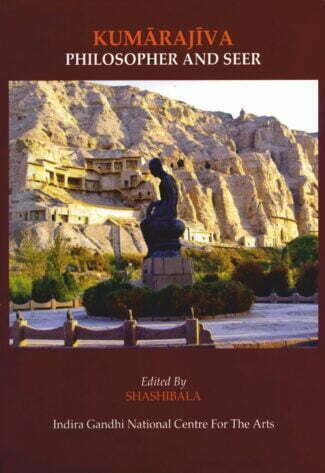
It is a compendium of recent researches on the brilliance that ushers through Kumarajiva’s legacy, enshrined in thousands of monasteries in China, Korea and Japan, preserving the heritage. His works inspired members of Imperial houses, Emperors, writers and artists, pilgrims and philosophers.
Kumarajiva, (Jiumóluóshi in Chinese), a philosopher and seer, had a long cherished mission: propagation of the true spirit of Buddhism. He broke political, geographical, cultural and linguistic barriers; travelled through barren lands and rivers, mountains and forbidding terrains to bequeath to us a casket of sacred sutras as the most authoritative presentations by translating them from Sanskrit into Chinese. He created pure, boundless and unthinkable versions of the sutras as an obeisance to the sacred voice so that one could bathe in the pure pond of the Dharma.
Kumarajiva: Philosopher and Seer is a compendium of recent researches on the brilliance that ushers through his legacy, enshrined in thousands of monasteries in China, Korea and Japan, preserving the heritage – his translations of the sacred Sanskrit texts copied over the last sixteen centuries. The life of Kumarajiva was unique in every aspect. His works inspired members of Imperial houses, Emperors, writers and artists, pilgrims and philosophers. His angelic presence can still be felt in the monastic establishments, in the sound of recitation of sutras and in the lives of the people that have been inspired over the centuries by his translations.
The researches done by scholars from world academia are included in the present volume on his date of birth, the towns and villages where he spent his life from childhood to nirvana, historically important events of his life, his contemporaries, his contribution to the cultural sphere of East Asia especially defining a new road for Mahayana Buddhism, philosophical theories and vision, comparative studies of his translations and echoes of his translations in Chinese literature.

The book traces the beginning of narrative compositions in reliefs depicting the life of the Buddha and analyzes these sculptural depictions of events relating them to biographical texts on him. Supported by over 210 illustrations including drawings and photographs, the work reveals the process of symbolization in visual forms and participation of the sculptors in the process.
The life of the Buddha has been a great source of perennial inspiration to scholars, artists and poets since the early times. Many events from the life of the Buddha have inspired some of the greatest relief compositions in Indian art, which have been depicted in sculptures and monuments.
Tracing the beginning of narrative compositions in reliefs delineating the life of the Buddha, the book analyzes these sculptural depictions of events in the context of several biographical texts on him. The episodes represent the Buddhas birth, enlightenment, first sermon and miracle at Shravasti, descent from Tuùita heaven, subduing of Nalagiri, culminating with mahaparinirvana. The book explores how some of Buddhas basic teachings are linked with certain specific episodes of his life. It highlights the difference between representations of the same events by artists at various periods and places and the differences between the textual description and its sculptural counterpart. It also undertakes a survey of the inspiration provided by the theme of the Buddhas life to devotees and artists in other Asian countries as revealed in their iconography and sculpture.
Supported by over 210 illustrations including drawings and photographs, it reveals the process of symbolization in visual forms and participation of the sculptors in the process. It shows that the sculptural reliefs provide a fascinating insight into the creative mind of the Indian artist: how he invented visual devices and integrated them into the formal structure and the story content and imparted meanings in each sculptural relief. The volume will be essential reading for students and scholars of art history and Buddhist art in particular.

This volume highlights, perhaps for the first time, the techniques whereby mandala-schemes are projected in thought, belief and action, on to widely differing natural landscapes. The emphasis is on geographical contexts and socio-cultural traditions.
Since the publication in English of the Theory and Practice of Mandala by Giuseppe Tucci in 1961, our knowledge of the subject has increased considerably. Two-dimensional paintings (Tibetan: thanka, Skt.: paubha) have been displayed in many art exhibitions, reproduced photographically, and analysed in readable books as well as in articles in specialised journals. Three-dimensional mandalas like, for instance, the Barabadur in Java recently renovated by UNESCO, have been visited by many thousands of tourists as well as pilgrims. In America, Europe and Asia, monks have made and unmade numerous sand-mandalas openly, in public. Mandalas are, indeed, much less secret than they used to be. Yet, up to now, mandalas have largely been studied outside the context of their use: in museums, in exhibitions and in libraries This volume highlights, perhaps for the first time, the techniques whereby mandala-schemes are projected in thought, belief and action, on to widely differing natural landscapes. Putting together the research findings of a group of Buddhist scholars from America, Austria, England, France, Germany and New Zealand, Professor Macdonald tries to underscore the linkages between mandalas and landscapes in varying eco-systems between Afghanistan and Japan with special focus on their geographical contexts and socio-cultural traditions. Each of the ten studies, included here, is supported by relevant illustrative material and extensive bibliographical references. Embodied in Mandala and Landscape are the research results from field-work carried out in China, Nepal, Pakistan, Japan and Tibet. It is, as such, invaluable to scholars of Buddhist Studies, specially the researchers involved with the mandalas in South Asia and elsewhere.

This book is a dictionary of mudras in Hindu and Buddhist religious practices that lists various mudras and contains detailed and revealing notes about them. It scrutinizes the work done by a number of scholars to throw further light on the subject.
Mudras occupy an important place in Buddhist and Hindu religious practices as these signify special meanings, associated with specific divinities and rites, which cannot be represented any other way. This book is a dictionary of mudras in Hindu and Buddhist religious practices that lists the various mudras deity-centred, rite-centred, yogic-centred, and so on illustrating each with a simple drawing drawn generally from the perspective of one holding the mudra. It contains detailed notes that give numerous references to literary and other sources that reveal a lot about the mudras their descriptions in the texts, rites associated with the mudras in the texts as well as the varied interpretations of a number of mudras in the different texts. The book also has an introduction on Hindu and Buddhist mudras that goes into iconographic features associated with deities along with the technical descriptions and the subcategories and further divisions into which mudras are arranged. It scrutinises the work done by a number of scholars on the subject to throw further light on the subject. The volume will prove indispensable to all students and scholars who are engaged in study of Hindu and Buddhist religious traditions and practices.

The volume presents a critical study with English translations of the renowned Buddhist scholar Nagarjunas works, Mahayanavimsika, Pratiya-samutpadahrdayakarika and Pratiasamutpada-hrdayavyakhyana a prose work. While the translations are easy to understand, the comment-aries incorporate study of rare manuscripts like the Dunhuang manu-scripts (eighth-ninth centuries) to thoroughly examine the significance of Nagarjunas contributions to Buddhist religious philosophy.
No one can, perhaps, question the philosophical genius of Nagarjuna. In the dialectic of this AD second century Buddhist scholar also acknowledged as the founder of Madhyamika school, is seen the clearest expression of Shkyamuni Buddha’s profound, even the subtlest teachings. Here is, in three parts, a brilliant critical study, with readable English translations, of this time-honoured philosopher’s Mahayanavimshika (Verses on the Great Vehicle), Pratiyasamutpadahridayakarika (Verses on the Heart of Dependent Origination) and, these besides, of his prose commentary, Pratiasamutpadahridayavyakhyana (An Interpretation of the Heart of Dependent Origination). Part 1, comprising translation, is intended to present these Buddhist texts, is an accessible form, unencumbered by any critical apparatus. Part 2 provides text critical material as well as other comments for readers interested in something more than just the translation in isolation. In part 3 are incorporated, for specialists/scholars/academics, further critical comments in the light of the Dunhuang manuscripts (c. eighth-ninth centuries ad), relating to the Pratiyasamutpadahridaya. A remarkable combination of Jamiesons Sanskrit and Tibetan scholarship, this study is invaluable to anyone seeking a better understanding of Nagarjuna: the Buddhist philosopher and patriarch.
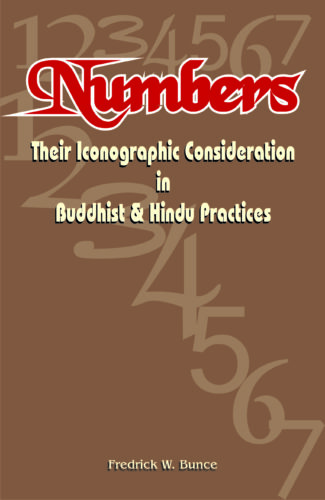
The book highlights the true iconographic import of numbers/ numerology in Hindu and Buddhist practices bringing out, in detail, the unique properties of each iconographically significant number: ranged between one (1) and one thousand and twenty four (1024).
In his effort to find an explanation for the unknown, the mysterious around him, the ancient man saw in numbers, among other things, a high significance. And frequently used them to explain the ineffable or even predict through numerology. Astrology became a parallel, interwoven science which, like numerology, was used to predict the future and also to determine propitious times for venturing upon an important activity: be it the naming of a child, marriage, or construction of a building. Numbers, in fact, have always held a strong fascination for all various cultures of Asia. Considered to inhere both mystic and iconic significance in the Hindu and Buddhist worlds, their importance was emphasized in celebrated architectural treatises, like the Manasara and the Mayamata and they, (together with other complex procedures), were invariably utilized by the priest-architect (the sthapati) in the planning, design and construction of temples and other buildings. Not only the numbers, but even the geometric forms (like the circle, square or rectangle) came to have numerological and, consequently, iconographic importance in these cultures. Yet another fascinating work from an internationally known scholar of Oriental Art, the book highlights the true iconograpic import of numbers/numerology in Hindu and Buddhist practices bringing out, in detail, the unique properties of each iconographically significant number: ranged between one (1) and one thousand twentyfour (1024). Professor Bunce here perceives numerology not as the arcane or occult science, but as an academic proposition concerned with the ethos of numbers and the genesis of their importance within the Hindu and Buddhist art, particularly architecture. A useful read for the scholars of iconography.
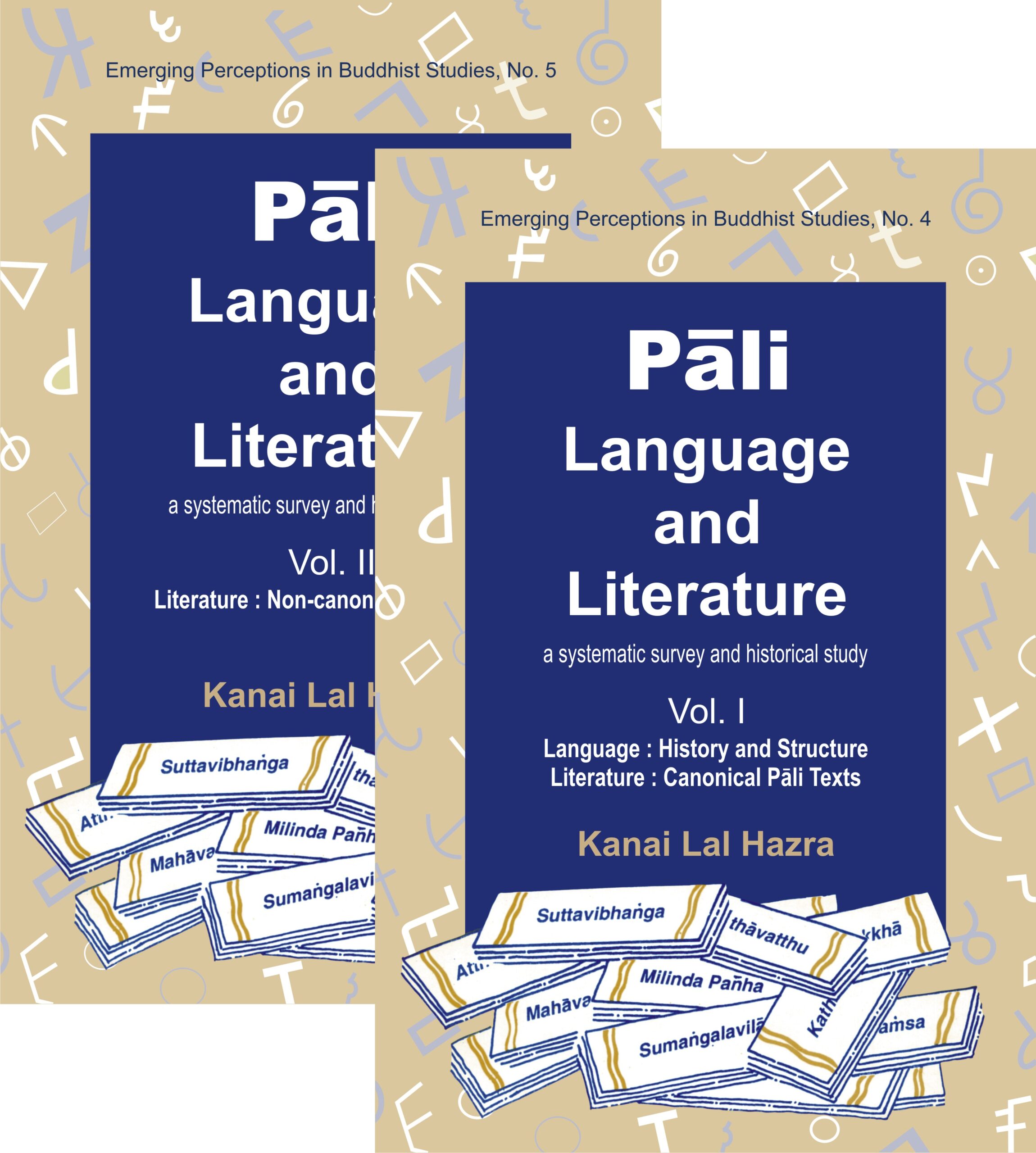
Beginning with a description of the language, its historical evolution, phonology and grammatical categories, the book studies the canonical Pali texts (the three Pitakas) and surveys the non-canonical Pali literature covering manuals and chronicles.
In Pali is preserved the Buddhist canon. Which, considered as the most authentic form of Buddhavacana, constitutes the very matrix of its 2500-year-long Theravada tradition. A refined, widely-spoken language of the early Middle Indic (Indo-Aryan) stage: about bc 600-200, Pali has also left, for posterity, a splendid legacy of secular literature that captures contemporary socio-cultural milieus not only of India, but of Myanmar, Thailand, Sri Lanka, and other neighbouring countries as well. Here is, in two volumes, a fascinating, well-knit study of the Pali language, and also of its literature: both canonical and non-canonical. Beginning with a systematic description of the language, its historical evolution, phonology and major grammatical categories, VOLUME 1 takes an indepth, critical look at the canonical Pali texts all the three Pitakas : the three baskets (collections): the Vinaya, Sutta and Abhidhamma, which, among other things, embody Sakyamunis own universal message, the writings of his immediate monastic followers/disciples, the basic principles of shula (ethical behaviour), the disciplinary codes for the sangha and, above all, the Theravada philosophy in its truly pristine frame. VOLUME 2 surveys nearly the whole variety of Non-canonical Pali Literature covering creative writings, manuals, and as many as 25 chronicles: from Sri Lanka, Myanmar, and Thailand besides numerous commentaries of the old-world scholars, like Buddhadatta, Buddhaghosa, and Dhammapala. In focus here are also a range of treatises on law, grammar, lexicography, and poetics including rhetorics and metrics. A painstakingly documented work with a comprehensive index, involving years of Dr. Hazras research effort, this book is invaluable to the scholars/researchers of Buddhist Studies, specially of Theravada Buddhism, Pali language and Pali literature.
भारतवर्षीय दर्शन परम्परा में अनेक सम्प्रदाय, पद्धतियां, चिन्तन–मार्ग और साधना के आयाम हैं। वे सभी पद्धतियाँ मुख्यत: तीन ग्रन्थाें पर आधारित हैं। जिनमें कुमारिल भट्ट का श्लाेकवार्त्तिक, धर्मकीर्ति का प्रमाणवार्त्तिक, तथा गङ्गेश उपाध्याय का तत्त्वचिन्तामणि हैं। वे तीन ग्रन्थ आज तक की भारतीय दर्शन परम्परा के प्रतिनिधि ग्रन्थ हैं और तीन मार्गाें के रूप में स्थापित हैं। हम कुछ भी चिन्तन, लेखन या विचार करते हैं ताे वे इन तीनाें में से किसी एक मार्ग में स्वतः ही चले आते हैं।
धर्मकीर्ति का यह प्रमाणवार्त्तिक ग्रन्थ अत्यन्त कठिन हाेने से इस ग्रन्थ का अब तक किसी भी भाषा में पूर्ण रूप से अनुवाद नहीं हाे पाया है। इसके कुछ श्लाेक अंग्रेज़ी में अनुदित हैं ताे कुछ हिन्दीए फ्रेंचए जर्मन और नेपाली में भी अनुदित हुए हैं। किन्तु अब तक पूर्ण ग्रन्थ का और इसकी किसी भी टीका का पूर्ण अनुवाद न हाेना इसकी भाषा का कठिन हाेना, विचाराें का गूढ़ हाेना तथा अत्यन्त दुरुह प्रकरणाें का हाेना ही कारण रहा है। कुछ विदेशी विद्वान् इसका अंग्रेज़ी में अनुवाद करने के लिए भी लगे हुए हैं किन्तु बीसाें वर्षाें के बाद भी वे इसे पूरा नहीं कर सके हैं। अतः यह हिन्दी अनुवाद अपने आप में प्रथम पूर्ण अनुवाद और सम्पादन है।
प्रस्तुत ग्रन्थ में पाँच प्रकरण हैं – 1. प्रमाण सिद्धि परिच्छेद, मनाेरथनन्दी के साथय; 2. प्रत्यक्ष परिच्छेद, मनाेरथनन्दी के साथ; 3. स्वार्थानुमान परिच्छेद, स्वाेपज्ञवृत्ति सहित (जाे कि धर्मकीर्ति की अपनी ही वृत्ति है); 4. स्वार्थानुमान परिच्छेद, मनाेरथनन्दी के साथ; और 5. परार्थानुमान परिच्छेद, मनाेरथनन्दी के साथ।
इस ग्रन्थ में प्रथम बार समग्र प्रमाणवार्त्तिक का उपस्थापन किया गया है। इस में स्वयं धर्मकीर्ति की स्वाेपज्ञवृत्ति स्वार्थानुमान परिच्छेद में वर्णित है जिसका अनुवाद सहित उपस्थापन पाँचवें परिच्छेद के रूप में रखा गया है।
The book narrates the interwovenness of culture between India, Nepal, Tibet, Mongolia, China and Japan. It begins with Nepal with its history alive on the waysides and homes, its rich preservation of Buddhist sutras in Sanskrit, esp. the Tattvasangraha which lives in the Shingon denomination in Japan, in the icons of Alchi and in the grandeur of the Borobudur. The second chapter deals with Tibetan studies, edition of the Vinayavastu, the anachronism of Jesus Christ being in the Hemis monastery which was founded as late as the 17th century, the total destruction of Tibetan culture in a long letter of Prof. A.W. Macdonald, saving the Derge monastery and printery by seven encirclements of devotees under the supervision of Ven. Pewar Tulku at the risk of his life, and the Sven Hedin collection in Stockholm. The fourth chapter concerns Mongolian studies: Emperor Ch’ien-lung’s edition of the Mongolian Kanjur, and dialogues with Prof. Rinchen on the total cultural genocide in Mongolia
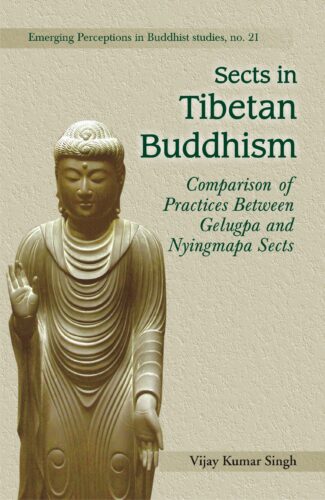
The teachings of Buddha are timeless and priceless and can answer most of the problems that the materialistic world faces today. Nyingma, the first-ever sect of Buddhism in Tibet introduced by Padmasambhava of India, and Gelug, the fourth sect in succession, are dealt with in detail in this book.
The teachings of Buddha are timeless and priceless. The eightfold path as preached by Buddha is still relevant and concurrent with non-violence and compassion in its central point and can answer most of the problems that the materialistic world is facing due to ignorance as its root cause. The Tibetan books were well preserved by the Lamas in their monasteries throughout centuries and in live conditions. India, once the source of religion for Tibet, lost its Buddhist treatises during the past few centuries. Tibetan Buddhist treatises are considered the most authentic source for restoration of Buddhist teaching in the Indian sub-continent. Nyingma, the first ever sect of Buddhism in Tibet was introduced by Padmasambhava of India and still it is in practice. The Gelug sect is the fourth in succession and it claims to have the largest number of followers not only among Tibetans but also popular in the eyes of Western Buddhists, beside others, since more and more Gelug monks are invited to deliver lectures about Buddhism in the West. The responsible factors, inter alia, are perhaps the simplified and elaborate teachings about the altruistic state of mind i.e. Bodhicitta, great compassion, teachings on calming the mind and discerning the real (zhi Nas and Lha Thon) which carry most of the answers to the problems which the world is facing. The present book is an attempt to disseminate the teachings of Buddha from the purest available sources i.e. Buddhism in Tibet. It is a tribute to the peace loving Tibetans who have lost their homeland but still preserve the Buddhist teachings among themselves.
“Dreams play a significant role in our life, meaningfully affecting us in the development of our personality and our spiritual journey. They are an everyday experience for any human being. Dreams have always been of great interest to poets and philosophers alike since ancient times and examples are aplenty in Indian and Western scriptures. However, it is an uphill task for an ordinary person to fully appreciate the intricacies and significance of dreams in the day-to-day life. It is here that this book proves as an invaluable guide providing deep understanding on the nature of dream and sleep.
This book is a repertoire of human wisdom – gathered for centuries and attested by the modern science – offering enormous insights into our dream and deep-sleep states. It asks, from a common man’s point of view, many a question that perturb us and provides answers to them from the scientific and spiritual perspectives in a captivating way. Some such questions include:
• Do we see dreams in black and white or in colour?
• What does a visually-challenged person see in his dreams?
• Why are some of our dreams extraordinarily vivid with electric colours, the clarity and brilliance of which, we may never encounter in our ordinary waking lives?
• Why are we non-reflective, irrational in our dreams?
• Are the dream time and waking time equal?
• How does our memory work in dream state? Why do we forget our dreams and is it possible to improve dream recall and cultivate awareness in dreams?
• Why do we fail to distinguish a dream object from the physical world object while we are dreaming?
• If the dream experience exactly feels like the real world and we fail to distinguish it from the waking world while we are dreaming, how can we be certain that we are not dreaming now?
• How does a dream contain various persons exhibiting opposite emotions at the same time when all the dream characters including the witnessing dreamer are produced out of single mind of the dreaming person?
• Can we intentionally transform the dream scenarios? If so, what would be the philosophical implications of it?
• Can dreams and sleeps be utilized for spiritual elevation?
… and many more questions we always wondered about the daily eight hours of our bed time, but never got the right answers to! We find new meanings and ways in dealing with our dreams in this volume, therefore, it is a must read for every dream enthusiast as well as any serious spiritual seeker.
“
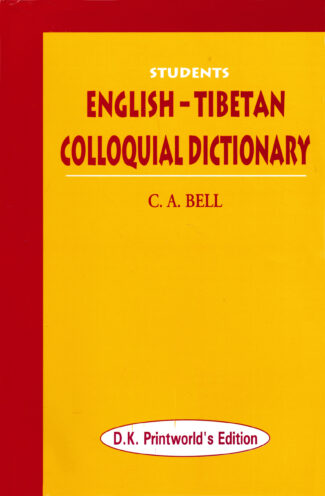
The Dictionary containing more than eleven thousand words including honorific words, is a practical handbook that attempts to provide a quick yet thorough understanding of the colloquial Tibetan language. It presents Tibetan words in romanised form for pronunciation by those who do not understand Tibetan.
The Dictionary is a practical handbook that attempts to provide a quick yet thorough understanding of the colloquial Tibetan language. A special feature of the Dictionary containing more than eleven thousand words including honorific words, is that the Tibetan words are presented in romanised form for pronunciation by those who do not understand Tibetan. An introductory chapter details the structure and system of pronunciation of Tibetan letters and words. It combines an easy approach with incorporation of features like two or more Tibetan words against the same English equivalent and the literary form in the Tibetan character, with the colloquial form in the romanised Tibetan, when the colloquial and Tibetan forms differ from each other to some extent. All this is to aid in a deeper knowledge of the subject. A special feature of this edition is that all the corrections listed in the errata of the second edition have been carried out in the main text. The volume will be particularly useful to scholars of Tibetan language and English-speaking students learning the language.